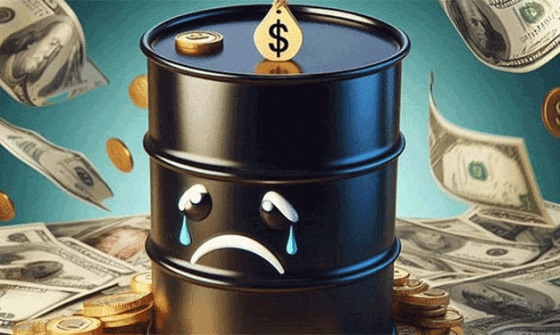Uncategorized
Monster typhoon slams into northeastern Philippines

TUGUEGARAO, Philippines — Typhoon Mangkhut slammed into the country’s northeastern coast early Saturday, with witnesses saying the storm’s ferocious wind and blinding rain ripped off tin roof sheets and knocked out power at the start of the onslaught.
The typhoon made landfall before dawn in the coastal town of Baggao in Cagayan province on the northern tip of Luzon island, an agricultural region of flood-prone rice plains and mountain provinces often hit by landslides.
More than 5 million people are at risk from the storm, which the Hawaii-based Joint Typhoon Warning Center categorizes as a super typhoon with powerful winds and gusts equivalent to a category 5 Atlantic hurricane.
There were no immediate reports of major damages or casualties in the region, where a massive evacuation from high-risk areas has been underway for the last two days.
Associated Press journalists in a hotel in Cagayan’s capital city of Tuguegarao saw tin roof sheets and other debris hurtle through the air and store signs crash to the ground. Cars shook as gusts pummeled a parking lot.
With a huge raincloud band 900
Mangkhut was tracked late Friday about 190
Even if the typhoon weakens slightly after slamming ashore, its winds will remain very destructive, government forecaster Rene Paciente said.
“It can lift cars, you can’t stand, you can’t even crawl against that wind,” Paciente told reporters late Friday in Manila.
In Cagayan’s capital city of Tuguegarao, residents braced for the typhoon’s fury by reinforcing homes and buildings and stocking up on food.
“It was busy earlier in the hardware store and people were buying wood, nails, tin wire, plywood and umbrellas,” said Benjamin Banez, who owns a three-story hotel where workers were busy hammering up wooden boards to protect glass panels.
A super typhoon wrought heavy damage to Banez’s hotel and the rest of Cagayan in 2016. “We’re praying that there will be less damage this time, although we know that this one will be very strong,” Banez said.
Ninia Grace Abedes abandoned her bamboo hut and hauled her four children to a school building serving as an emergency shelter. The 33-year-old laundrywoman said the 2016 typhoon blew away their hut, which they abandoned before the storm hit.
“If we didn’t, all of us would be dead,” Abedes said.
More than 15,300 people had been evacuated in northern provinces by Friday afternoon, the Office of Civil
Concerns over massive storm surges that could be whipped inland by the typhoon’s winds prompted wardens to move 143 detainees from a jail in Cagayan’s Aparri town to nearby towns, officials said.
The typhoon hit at the start of the rice and corn harvesting season in Cagayan, a major agricultural producer, prompting farmers to scramble to save what they could of their crops, Cagayan Gov. Manuel Mamba said. The threat to agriculture comes as the Philippines tries to cope with rice shortages.
After the Philippines, the Hong Kong Observatory predicts Mangkhut will plow into the Chinese mainland early Monday south of Hong Kong and north of the island province of Hainan. Though it is likely to weaken from a super typhoon to a severe typhoon, it will still be packing sustained winds of 175 kph (109 mph), it said.
The observatory warned of rough seas and frequent heavy squalls, urging residents of the densely populated financial hub to “take suitable precautions and pay close attention to the latest information” on the storm.
The gambling enclave of Macau, near Hong Kong, suffered catastrophic flooding during Typhoon Hato last August that left 10 dead and led to accusations of corruption and incompetence at its meteorological office.
On the Chinese mainland, the three southern provinces of Guangdong, Guangxi and Hainan are
Guangdong, China’s manufacturing hub, has set up 3,777 shelters, while more than 100,000 residents and tourists have been moved to safety or sent home. The province has recalled more than 36,000 fishing boats to port, while train services between the cities of Zhanjiang and Maoming have been suspended and all ferry services between Guangdong and Hainan have been put on hold. Fujian province to the north of Guangdong is also closing beaches and tourist sites, the agency reported.
Philippine forecasters said the shifting typhoon could possibly blow toward Vietnam after it exits late Saturday or early Sunday.
In an emergency meeting Thursday, President Rodrigo Duterte asked Cabinet officials from the north to help oversee disaster-response work and told reporters it was too early to consider seeking foreign aid.
“It would depend on the severity of the crisis,” Duterte said. “If it flattens everything, maybe we need to have some help.”
Mangkhut, the Thai word for mangosteen fruit, is the 15th storm this year to batter the Philippines, which is hit by about 20 a year and is considered one of the world’s most disaster-prone countries.
Typhoon Haiyan left more than 7,300 people dead or missing, flattened entire villages, swept several ships inland and displaced over 5 million in the central Philippines in 2013.
___
Associated Press writers Jim Gomez in Manila, Philippines, and Christopher Bodeen in Beijing contributed to this report.
Aaron Favila And Joeal Calupitan, The Associated Press
Uncategorized
Mortgaging Canada’s energy future — the hidden costs of the Carney-Smith pipeline deal


Much of the commentary on the Carney-Smith pipeline Memorandum of Understanding (MOU) has focused on the question of whether or not the proposed pipeline will ever get built.
That’s an important topic, and one that deserves to be examined — whether, as John Robson, of the indispensable Climate Discussion Nexus, predicted, “opposition from the government of British Columbia and aboriginal groups, and the skittishness of the oil industry about investing in a major project in Canada, will kill [the pipeline] dead.”
But I’m going to ask a different question: Would it even be worth building this pipeline on the terms Ottawa is forcing on Alberta? If you squint, the MOU might look like a victory on paper. Ottawa suspends the oil and gas emissions cap, proposes an exemption from the West Coast tanker ban, and lays the groundwork for the construction of one (though only one) million barrels per day pipeline to tidewater.
But in return, Alberta must agree to jack its industrial carbon tax up from $95 to $130 per tonne at a minimum, while committing to tens of billions in carbon capture, utilization, and storage (CCUS) spending, including the $16.5 billion Pathways Alliance megaproject.
Here’s the part none of the project’s boosters seem to want to mention: those concessions will make the production of Canadian hydrocarbon energy significantly more expensive.
As economist Jack Mintz has explained, the industrial carbon tax hike alone adds more than $5 USD per barrel of Canadian crude to marginal production costs — the costs that matter when companies decide whether to invest in new production. Layer on the CCUS requirements and you get another $1.20–$3 per barrel for mining projects and $3.60–$4.80 for steam-assisted operations.
While roughly 62% of the capital cost of carbon capture is to be covered by taxpayers — another problem with the agreement, I might add — the remainder is covered by the industry, and thus, eventually, consumers.
Total damage: somewhere between $6.40 and $10 US per barrel. Perhaps more.
“Ultimately,” the Fraser Institute explains, “this will widen the competitiveness gap between Alberta and many other jurisdictions, such as the United States,” that don’t hamstring their energy producers in this way. Producers in Texas and Oklahoma, not to mention Saudi Arabia, Venezuela, or Russia, aren’t paying a dime in equivalent carbon taxes or mandatory CCUS bills. They’re not so masochistic.
American refiners won’t pay a “low-carbon premium” for Canadian crude. They’ll just buy cheaper oil or ramp up their own production.
In short, a shiny new pipe is worthless if the extra cost makes barrels of our oil so expensive that no one will want them.
And that doesn’t even touch on the problem for the domestic market, where the higher production cost will be passed onto Canadian consumers in the form of higher gas and diesel prices, home heating costs, and an elevated cost of everyday goods, like groceries.
Either way, Canadians lose.
So, concludes Mintz, “The big problem for a new oil pipeline isn’t getting BC or First Nation acceptance. Rather, it’s smothering the industry’s competitiveness by layering on carbon pricing and decarbonization costs that most competing countries don’t charge.” Meanwhile, lurking underneath this whole discussion is the MOU’s ultimate Achilles’ heel: net-zero.
The MOU proudly declares that “Canada and Alberta remain committed to achieving Net-Zero greenhouse gas emissions by 2050.” As Vaclav Smil documented in a recent study of Net-Zero, global fossil-fuel use has risen 55% since the 1997 Kyoto agreement, despite trillions spent on subsidies and regulations. Fossil fuels still supply 82% of the world’s energy.
With these numbers in mind, the idea that Canada can unilaterally decarbonize its largest export industry in 25 years is delusional.
This deal doesn’t secure Canada’s energy future. It mortgages it. We are trading market access for self-inflicted costs that will shrink production, scare off capital, and cut into the profitability of any potential pipeline. Affordable energy, good jobs, and national prosperity shouldn’t require surrendering to net-zero fantasy.If Ottawa were serious about making Canada an energy superpower, it would scrap the anti-resource laws outright, kill the carbon taxes, and let our world-class oil and gas compete on merit. Instead, we’ve been handed a backroom MOU which, for the cost of one pipeline — if that! — guarantees higher costs today and smothers the industry that is the backbone of the Canadian economy.
This MOU isn’t salvation. It’s a prescription for Canadian decline.
Uncategorized
Cost of bureaucracy balloons 80 per cent in 10 years: Public Accounts

The cost of the bureaucracy increased by $6 billion last year, according to newly released numbers in Public Accounts disclosures. The Canadian Taxpayers Federation is calling on Prime Minister Mark Carney to immediately shrink the bureaucracy.
“The Public Accounts show the cost of the federal bureaucracy is out of control,” said Franco Terrazzano, CTF Federal Director. “Tinkering around the edges won’t cut it, Carney needs to take urgent action to shrink the bloated federal bureaucracy.”
The federal bureaucracy cost taxpayers $71.4 billion in 2024-25, according to the Public Accounts. The cost of the federal bureaucracy increased by $6 billion, or more than nine per cent, over the last year.
The federal bureaucracy cost taxpayers $39.6 billion in 2015-16, according to the Public Accounts. That means the cost of the federal bureaucracy increased 80 per cent over the last 10 years. The government added 99,000 extra bureaucrats between 2015-16 and 2024-25.
Half of Canadians say federal services have gotten worse since 2016, despite the massive increase in the federal bureaucracy, according to a Leger poll.
Not only has the size of the bureaucracy increased, the cost of consultants, contractors and outsourcing has increased as well. The government spent $23.1 billion on “professional and special services” last year, according to the Public Accounts. That’s an 11 per cent increase over the previous year. The government’s spending on professional and special services more than doubled since 2015-16.
“Taxpayers should not be paying way more for in-house government bureaucrats and way more for outside help,” Terrazzano said. “Mere promises to find minor savings in the federal bureaucracy won’t fix Canada’s finances.
“Taxpayers need Carney to take urgent action and significantly cut the number of bureaucrats now.”
Table: Cost of bureaucracy and professional and special services, Public Accounts
| Year | Bureaucracy | Professional and special services |
|
$71,369,677,000 |
$23,145,218,000 |
|
|
$65,326,643,000 |
$20,771,477,000 |
|
|
$56,467,851,000 |
$18,591,373,000 |
|
|
$60,676,243,000 |
$17,511,078,000 |
|
|
$52,984,272,000 |
$14,720,455,000 |
|
|
$46,349,166,000 |
$13,334,341,000 |
|
|
$46,131,628,000 |
$12,940,395,000 |
|
|
$45,262,821,000 |
$12,950,619,000 |
|
|
$38,909,594,000 |
$11,910,257,000 |
|
|
$39,616,656,000 |
$11,082,974,000 |
-

 Alberta2 days ago
Alberta2 days agoOttawa-Alberta agreement may produce oligopoly in the oilsands
-

 Energy2 days ago
Energy2 days agoWestern Canada’s supply chain for Santa Claus
-

 Energy2 days ago
Energy2 days agoThe Top News Stories That Shaped Canadian Energy in 2025 and Will Continue to Shape Canadian Energy in 2026
-

 International2 days ago
International2 days ago$2.6 million raised for man who wrestled shotgun from Bondi Beach terrorist
-

 armed forces21 hours ago
armed forces21 hours agoRemembering Afghanistan and the sacrifices of our military families
-

 Fraser Institute21 hours ago
Fraser Institute21 hours agoHow to talk about housing at the holiday dinner table
-

 Frontier Centre for Public Policy20 hours ago
Frontier Centre for Public Policy20 hours agoTent Cities Were Rare Five Years Ago. Now They’re Everywhere
-

 Opinion21 hours ago
Opinion21 hours agoPope Leo XIV’s Christmas night homily










